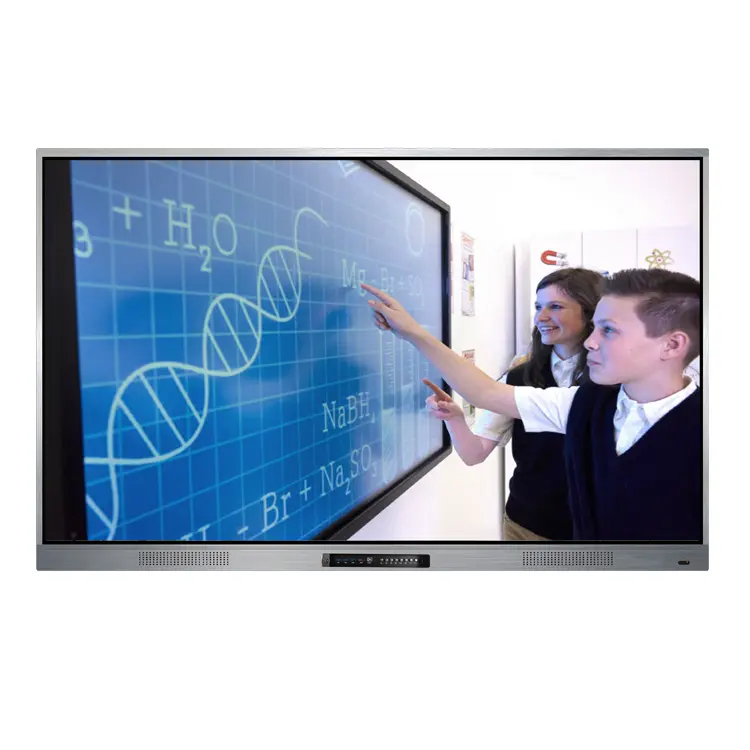Investing in a 75-inch digital teaching board is more than just buying a screen it’s about equipping your classroom with a powerful platform that transforms lessons into immersive experiences. But with a range of options and price points, how do you know which features truly justify the investment? In this guide, we’ll walk you through the critical capabilities that make certain models stand out, ensuring you get the best value for your budget.
Understanding the Investment
When evaluating the digital board price for teaching, remember you’re not just purchasing hardware. You’re investing in:
- Enhanced student engagement through interactive tools
- Seamless collaboration for group activities
- Future-proof technology that grows with your school’s needs
To see a benchmark model that balances performance and affordability, explore the digital board price for teaching.
Core Features to Prioritize
Not all features carry equal weight. Here are the essentials that deliver the biggest classroom impact:
1. High-Resolution Display
A 75-inch board needs more than size; it needs clarity. Look for:
- 4K UHD resolution: Ensures text and graphics remain crisp, even when viewed from the back row.
- Anti-glare panel: Minimizes reflections under bright classroom lights.
This visual fidelity reduces eye strain and helps students focus on the material, not the screen.
2. Touchscreen Responsiveness
Interactivity hinges on how the board reacts to touch:
- Capacitive touch technology: Provides near-zero latency and supports up to 20 touchpoints.
- Palm rejection: Allows natural writing without accidental marks.
These qualities make annotations feel as smooth as writing on paper, fostering a truly hands-on learning environment.
3. Built-In Software Ecosystem
A powerful board is useless without the right software:
- Integrated whiteboarding: Instant access to drawing tools, shapes, and text.
- Live polling and quizzes: Gauge comprehension in real time.
- Cloud connectivity: Save and share lessons seamlessly.
Boards that bundle robust apps reduce the need for separate licenses, cutting down long-term costs.
4. Connectivity and Ports
Flexibility in connections ensures compatibility with any device:
- HDMI & USB-C: Plug in laptops or tablets directly.
- Wireless screen mirroring: Encourage BYOD (Bring Your Own Device) activities.
- USB ports: Connect document cameras, webcams, or external storage.
This plug-and-play versatility streamlines lesson prep and keeps the focus on teaching.
5. Audio and Video Integration
For hybrid and remote lessons, built-in AV features are critical:
- High-fidelity speakers: Ensure clear audio in large rooms.
- Integrated camera and microphone: Facilitate video conferencing without extra equipment.
These tools support blended learning, letting remote students participate as fully as those in the room.
Premium Features Worth the Extra Spend
Once you’ve covered the basics, certain advanced options can significantly enhance your teaching toolkit. When evaluating the digital board for teaching 75 inch, consider these premium capabilities:
- AI-Powered Analytics: Tracks student participation, quiz results, and helps teachers identify topics needing reinforcement.
- On-Board Virtual Labs: Simulate science experiments or math visualizations directly on the display.
- Augmented Reality (AR) Support: Overlay 3D models of anatomy, architecture, or engineering projects for immersive lessons.
- Multi-Zone Collaboration: Divide the screen into independent workspaces, allowing groups to work side by side without interference.
While these features push the price higher, they can be game-changers in schools committed to innovative pedagogy and data-driven instruction.
Total Cost of Ownership: Beyond the Sticker Price
When budgeting, factor in ongoing costs alongside the initial purchase:
- Software license renewals (whiteboarding, polling, LMS integration)
- Annual maintenance contracts for parts and firmware updates
- Teacher training sessions to maximize adoption and effectiveness
Calculating the true total cost of ownership (TCO) over 3–5 years helps prevent surprises and ensures you allocate funds for upkeep.
Practical Tips for Smart Purchasing
- Pilot Before You Commit
- Test boards in a few classrooms. Gather feedback on ease of use and durability.
- Negotiate Bundles
- Vendors often offer discounts when hardware, software, and training are bundled together.
- Timing Matters
- Look for fiscal year-end or festive promotions when suppliers clear inventory.
- Leasing vs. Buying
- Consider lease-to-own options to spread costs over time while keeping technology current.
- Leverage Grants and Partnerships
- Explore government schemes or corporate CSR funding to offset initial outlays.
These strategies ensure you secure the best possible deal without compromising on quality.
Real-World Classroom Transformations
Schools that have made the leap report impressive results:
- Increased Participation: Teachers notice a 40% uptick in hands-on involvement during lessons.
- Faster Concept Mastery: Interactive simulations cut topic comprehension time by 20%.
- Enhanced Collaboration: Group projects thrive when students annotate and present directly from the board.
These outcomes underscore the potential return on your investment, making the board not just a cost but a catalyst for educational excellence.
Future-Proofing Your Classroom
Technology evolves rapidly. To keep your investment relevant:
- Choose modular designs that allow component upgrades (e.g., camera modules, touch overlays).
- Opt for open platforms that support third-party apps and avoid vendor lock-in.
- Ensure scalable licensing so you can add features as your school’s needs grow.
Planning for flexibility today means your 75-inch board remains a valuable asset years down the line.
Conclusion
A 75-inch digital teaching board can be the centerpiece of a modern classroom, but its value hinges on selecting the right combination of display clarity, touch responsiveness, software integration, and connectivity. While premium features like AI analytics and AR support come at a higher price, they may be worth it for schools aiming to lead in interactive, data-driven education. By understanding the breakdown of costs, prioritizing must-have features, and leveraging smart purchasing strategies, you’ll find the perfect balance between budget and innovation creating a learning environment that truly inspires.

